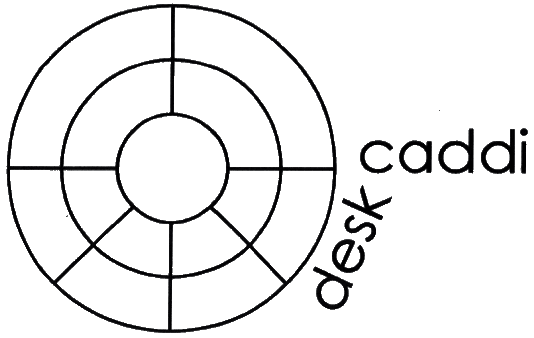Content
In this chapter, you will learn when and why process costing is used. You’ll also learn the concepts of conversion costs and equivalent units of production and how to use these for calculating the unit and total cost of items produced using a process costing system. This is a costing technique that accumulates costs for different types of jobs. For a batch to be considered as a separate job it has to be differentiated. If the batches are identical then process costing will have to be used.
- However, the cost of the last process is transferable to any subsequential process.
- Finally, he writes down on the job order cost sheet how many hours it took to build the staircase and multiplies it by the overhead rate.
- Batch 1 might be 1,000 solid black masks, while batch 2 is 1,500 red and white striped masks.
- Materials and all labor activity including lunches and breaks must be accurately documented and tracked.
- And at the end of the process, the final output or product is created.
- The decision to use either job order costing or process costing relies on the type of product and manufacturing process.
For example, a business might use job order costing to price a customer’s unique furniture order, which is a small job. A business might use process costing to track the costs of mass-producing a large order of furniture.
How to Calculate Process Costing?
The wages you pay specifically for the time worked on the project can then be added to the cost of the project. Gives you pricing flexibility- From the word go, you’ll have a clear picture of the costs, income, and profits. This allows you to determine the appropriate sale price and know the discounts you can offer without compromising profits. A key element of becoming profitable and scaling is effective cost management. It helps in different ways that ultimately translate to a higher profit margin.
What companies use job costing and process costing?
- Retail companies.
- Law firms and accounting businesses.
- Medical services.
- Film studios.
- Construction companies.
For unique products, the job costing method is used whereas for standardized products process costing method is used. The job order costing requires more record keeping activities than process costing. This is because in job order costing all the relevant costs are allocated separately to individual jobs and as for every job a separate job card is maintained, the amount of entries increase. While in process costing all the costs are aggregated and compiled, because all the costs relate to a single process of production.
Comparison of Job Costing with Process Costing
The job order costing system is a costing method that is used to calculate the costs attached to an individual job or order. In a business applying job order costing, each job or order is assigned a job number to distinguish it from the others. Costs related to each job are allocated directly to each specific https://online-accounting.net/ job. For example, a prefabricated staircase manufacturer makes standard stairs and custom stairs. The standard stairs are all identical and follow the same process. The firm decides to use process costing for the standard stairs. The company decides to use job order costing for all custom stairs.
A disadvantage of job order costing is that employees are required to track all materials and labor used during the job. As an example, consider a construction contractor using a job order costing system. The contractor has to keep track of all the wood, nails, screws, electrical fixtures, paint and other process costing vs job costing materials used on the job, as well as tracking workers’ lunch breaks and hours worked. What would happen, if down the line, they decide to do special custom planners for different customers? For example, an order comes in to make a planner in a certain color for a large employer to give to all employees.
Difference Between Job costing and Process costing
Without a thorough understanding of the cost of doing business in your industry, you may quickly find yourself falling into the red. But, later, products are produced in large volume, and consequently, it does not have individuality. Job Costing is best suited for the industries where specialized products are manufactured as per customer needs and demands. Some examples of those industries are Furniture, Ship Building, Printing Press, Interior Decoration, etc. In other words, the former is used to calculate the cost of jobs or contracts which are distinct in nature, while the latter used to compute the cost charged to each process. So, here in this article excerpt, we present all the differences between Job Costing and Process Costing, in a tabular form.
What is the best description of job costing?
Job costing is an accounting method designed to help you track the cost of individual projects and jobs. It involves looking at direct and indirect costs, and it's usually broken into three specific categories: labor, materials and overhead.
Some project management systems do offer job costing, which can be a useful tool. The best project management systems will integrate with many accounting packages so users can use the best software for them. By integrating with accounting software, it reduces double data entry and provides one hub for all data. That way trade contractors and subcontractors can make real-time financial decisions in the field, can log job costs quickly, and search them at a later date. In job costing, companies can track profit on specific jobs to determine which types of projects are most profitable. After several projects, a construction company may determine that their profit margins are higher in hospitality than healthcare.
Process Costing vs. Job Order Costing Systems & Examples
To measure the cost of a product, various cost techniques are used. Job costing is used when goods are produced against only special orders.
This is crucial to generate job estimates that are as close to your actual cost as possible. David Ingram has written for multiple publications since 2009, including “The Houston Chronicle” and online at Business.com.
Difference Between Job Costing and Process Costing
Accountants use control accounts to track the cost to go into the manufacturing process. Job costing is used for unique products, and process costing is used for standardized products. Though job costing, on going results that are for each job can be yielded. The costs incurred can be added even before the job is finished. This is helpful for the company since it enables the accounting staff of the company to access costs of jobs hence monitoring them. Recordkeeping- With job costing, recordkeeping is time-consuming and tedious. However, it’s more streamlined and efficient with process costing.
Also, the production workers track the time it takes to build each staircase, so direct labor is accounted for. Manufacturing overhead is allocated based on the cost driver direct labor hours. One main difference between job order costing and process costing is the product type and the uniqueness of the product evaluated. Businesses use job order costing for small batches of customizable or unique products and individual job orders, while businesses use process costing for mass-produced or standardized products. Typically, in process costing, the products produced are the same or very similar. Thus, it is very convenient to identify each job’s contribution to firm’s profit. Based on the cost to serve a particular customer, the company can decide whether it is lucrative to continue business relationships with such customers.
Individuality- Since each job is different, you can produce custom products in job costing. However, there is no individuality with process costing as it involves the production of identical units. Job Costing involves the costs of every individual unit of production. However, Process Costing involves the costs that are averaged for each production unit. As per the definition, Process Costing is a method that is applied to the manufacture business that is held together by various continuous or repetitive processes.
Vehicle Maintenance Best Practices To Survive Shortages – Heavy Duty Trucking
Vehicle Maintenance Best Practices To Survive Shortages.
Posted: Thu, 01 Sep 2022 07:16:50 GMT [source]
The cost to change machine settings and to move in different materials – such as a different type of fabric – is factored into the overhead cost for each product. Process costing is used when the products or services you offer are nearly identical or close to it. Job costing is more likely to be used for billings to customers, since it details the exact costs consumed by projects commissioned by customers. Process costing can also accommodate increasingly complex business scenarios.


